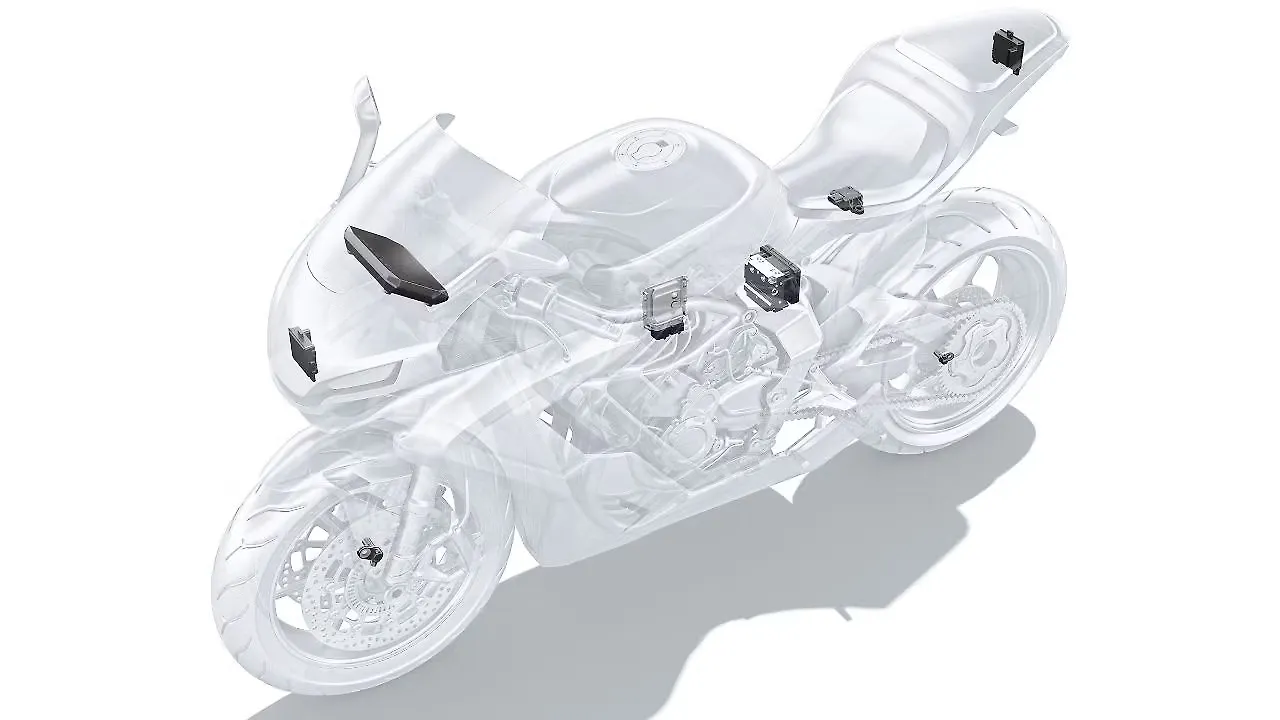
Bosch has introduced six new radar-based assistance systems for motorcycles, expanding its portfolio of safety and convenience technologies. Among these systems, five are world-first innovations that aim to significantly enhance rider safety.
According to Bosch Accident Research, these latest advancements could help reduce motorcycle accidents by as much as one in six, improving upon earlier systems that prevented one in seven accidents.
In collaboration with KTM, a leading European motorcycle manufacturer, four of these new features will debut in a new KTM model in November 2024, with production set for 2025.
Geoff Liersch, Head of Bosch's Two-Wheeler & Powersports division, highlighted the company's goal of making motorcycling safer and more comfortable while preserving the riding experience. This is not its first collaboration with KTM, as they previously worked together in 2013 to launch the MSC motorcycle stability control system.

Overview
Adaptive Cruise Control – Stop and Go (ACC S&G): In heavy traffic, motorcyclists often face the challenge of managing the clutch, brakes, and throttle, especially during stop-and-go situations. Bosch’s ACC technology, first launched in 2020, automatically adjusts the motorcycle's speed to match traffic flow, maintaining a safe distance from the vehicle ahead. The new ACC S&G function takes this a step further by allowing the motorcycle to come to a complete stop and then resume movement without manual clutch operation. This system is particularly effective on motorcycles with automatic transmissions, such as the upcoming KTM model, where the rider can start moving again by pressing a button or lightly activating the throttle.
Group Ride Assist (GRA): Group riding, often done in a staggered formation, can present challenges for existing adaptive cruise control systems, which expect the vehicle ahead to be centred in the lane. The company’s GRA system addresses this by detecting staggered formations and adjusting speed to maintain a safe distance from the motorcycles ahead. This system helps ensure a natural group riding experience, automatically switching back to standard ACC when the rider is not in a group.
Riding Distance Assist (RDA): RDA helps maintain a safe distance from vehicles in front when traffic is flowing smoothly, preventing rear-end collisions. Unlike ACC, RDA allows riders to control the motorcycle’s speed as usual, but it will automatically adjust acceleration or braking to maintain the pre-set distance from the vehicle ahead. Riders can deactivate the system or override it by applying the throttle if needed, allowing for a seamless riding experience.
Emergency Brake Assist (EBA): In emergency situations, quick braking can be crucial to avoid a collision. Bosch's EBA system steps in if the rider is not braking hard enough in response to a potential collision. The system automatically increases brake pressure to reduce speed and minimize the risk of an accident.
Rear Distance Warning (RDW): Monitoring traffic behind a motorcycle is often difficult, requiring extra attention from the rider. RDW continuously tracks vehicles approaching from behind and warns the rider if a vehicle gets too close by flashing a warning on the display. This helps the rider take necessary precautions to avoid a rear-end collision.
Rear Collision Warning (RCW): This system alerts drivers behind the motorcycle if a rear-end collision is imminent by activating the hazard lights. This system is particularly useful in situations where the rider needs to brake suddenly or when stopped in traffic, helping prevent accidents caused by vehicles that fail to notice the motorcycle.
Expanding Motorcycle Safety and Comfort: These new radar-based systems are designed to enhance both safety and riding comfort, providing motorcyclists with the support needed in a variety of real-world situations. The company’s focus on improving safety features such as adaptive cruise control, emergency braking, and rear-collision alerts is complemented by convenience features like group ride assistance and riding distance control. As these technologies become integrated into more motorcycles, the technology company aims to further reduce accidents and improve the overall riding experience without compromising enjoyment.
Also Read:
Bosch Ltd Confident In Leveraging India's Growth Amid Global Challenges